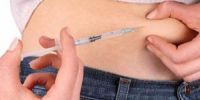Article
Genetic Mutation Possibly Linked to Diabetic 'Dead-in-bed' Syndrome
Author(s):
The medical literature reports up to 6% of all deaths in type 1 diabetic patients younger than age 40 are caused by "dead-in-bed" syndrome.

Sudden unexpected death among diabetics occurs approximately 10 times more often than in the general population. The medical literature reports up to 6% of all deaths in type 1 diabetic patients younger than age 40 are caused by “dead-in-bed” syndrome. The possibility that it may occur causes considerable anxiety for patients and clinicians, although pathologists generally report negative findings at autopsy and postulate hypoglycemia as the most likely explanation.
The February 2014 edition of Case Reports in Medicine presented a case study of a 16-year-old newly diagnosed male diabetic patient in New Zealand who died from dead-in-bed syndrome. The patient had an excellent history of tight glucose control with insulin and no prior history of cardiac- or seizure- related concerns.
This case was curious because the patient was found dead with a full stomach at autopsy, which suggested he died shortly after retiring, and a glucose level of 126mg/dL in his vitreous humor. Those findings suggested hypoglycemia was not an issue and, instead, pointed to the possibility of a cardiac ion channelopathy, such as long QT syndrome or Brugada syndrome, which has been suspected to cause death in diabetic patients by precipitating malignant arrhythmias, although this theory has never been proven. Large meals also unmask the Brugada electrocardiographic (ECG) signature in genetically predisposed individuals.
Peripheral blood samples from the patient revealed a missense mutation in the glycerol-3-phosphate dehydrogenase 1-like protein (GPD1L) gene, which has been linked to Brugada syndrome and sudden infant death syndrome (SIDS), and suggests that dead-in-bed syndrome may be related. The patient’s family reported no known history of sudden death in relatives, though the father showed a marginally prolonged QT interval and subtly abnormal repolarization on ECG and also possessed the GPD1L gene mutation.
The case study suggested clinicians should obtain a thorough family history to identify young sudden death or arrhythmic syndromes in relatives, as well as a 12-lead ECG in all diabetic patients. In addition, the authors recommended that good quality DNA should be retained following sudden death in a young person with or without diabetes. If a conclusive cause of death is not found appropriate, then cardiac genetic testing and family counseling is highly recommended.




